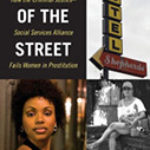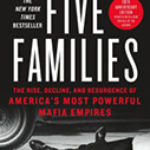Police Corruption: Essential Readings

Editor: Leslie Holmes
Publisher: Cheltenham, UK; Northampton, MA: Edward Elgar Publishing, 2014. 674p.
Reviewer: Richard Allinson | November 2015
Police were rated the second most corrupt type of government agency by respondents in Transparency International’s 2013 Global Corruption Barometers (GCB) report, which is based on surveys in more than 100 nations. Survey respondents also thought police officers were the public employees most amenable to accepting bribes. These findings – which replicate results in earlier GCB surveys – are cited by Leslie Holmes as evidence that corruption in police agencies worldwide has not received sufficient attention from criminologists. To facilitate new research, in this volume Holmes has brought together 30 of the “most informative and thought provoking” studies of police corruption published in recent decades.
Holmes (University of Melbourne) summarizes the book’s main themes as follows: “Citing evidence from around the world, this volume demonstrates clearly that police corruption is thriving and ubiquitous; that it undermines public trust in the authorities – and hence legitimacy; and that the more serious forms constitute a significant, if often underestimated, security threat. But it also shows that there are numerous ways of addressing police corruption.”
According to Holmes, research on anti-corruption strategies indicates that these reforms “will be at best only partly successful if the political will behind them is weak.” And even when reforms do have the support of a nation’s political leadership, Holmes warns that “demonstrable strong support from the public” is also essential to overcoming the inevitable resistance from police bureaucracies.
Part I of the anthology includes three papers on definitional and classificatory questions. Maurice Punch provides an overview of the difficulties in defining police corruption, compares two typologies of this behavior, and delineates the values and characteristics often associated with police culture. Taleh Sayed and David Bruce advance a working definition of corruption as “any illegal conduct or misconduct involving the use of occupational power for personal, group or organizational gain.” Philosopher John Kleinig explores the ethical issues raised when police officers accept small gifts, such as free coffees and similar symbols of appreciation.
Part II investigates the significance and impact of police corruption. Public opinion surveys analyzed by Ronald Weitzer show that media reports of police corruption and the use of excessive force in Los Angeles and New York City produced long-lasting negative perceptions among white, Hispanic and African American residents. In a survey of Dutch police officers conducted by Leo Huberts et al., respondents cited “maintaining strict discipline” as especially effective in reducing corruption. Justice Tankebe’s study of public attitudes toward the police in Ghana concludes – “somewhat counter-intuitively” – that citizens’ views of police reforms were less influenced by their personal encounters with law enforcement than by their vicarious experiences and evaluations of police reform measures.
Problems of measuring the incidence and identifying the most common types of police corruption are explored in Part III. Sanja Kutnjak Ivkovic’s analysis of surveys of police officers from Croatia, Finland and the U.S. uncovers a significant lack of consensus on the perceived seriousness of the more minor forms of corruption. Adrian Beck and Ruth Lee’s survey of students at a Russian police academy reveals that many considered it acceptable to engage in various forms of corruption. A survey conducted by Soo Son and Dennis Rome among police officers and ordinary citizens in Ohio reveals differing perceptions of and experiences with corruption within and between the two groups.
Part IV discusses the prevailing levels of corruption in individual countries. Joel Miller finds that corruption occurs in many British police forces, although only a small minority of officers engage in it. Maurice Punch’s overview of corruption in U.S. police forces since the 1880s concludes that such behavior is endemic, resilient and often systemic. An analysis by Theodore Gerber and Sarah Mendelson of survey and focus-group research in Russia concludes that predatory policing is a salient feature of contemporary life in that country and that it is undermining the transition to democracy.
“Police culture” is the topic of Part V. Jerome Skolnick reports evidence of a “’Blue Code of Silence” among New York City police officers, and he offers concrete proposals for penetrating that code. Australian criminologist Andrew Goldsmith advocates enlisting police officers themselves in negotiated rulemaking to improve the work and image of law enforcement. Janet Chan’s study of relations between police officers and minorities in New South Wales demonstrates that police culture can be reformed if certain structural changes are adopted. Jerome Skolnick shows that changing the pay scales of New York City police officers has altered their attitudes toward venality. Interviews conducted by Marilyn Corsianos with 32 former U.S. police officers explore how “male values” contribute to police corruption. A study by John Crank et al. of 59 deputies in the western U.S. explores the formation of the officers’ attitudes toward the concept of “noble cause” in policing.
Part VI addresses other causes of police corruption. Lawrence Sherman’s classic 1974 theoretical analysis identifies three ideal-types of police corruption and generates 14 hypotheses about why some police organizations or units are more corrupt than others. Twenty-five years later Tim Newburn employed Sherman’s conceptual framework as the basis of a useful overview of virtually all aspects of police corruption. Hubert Williams identifies cultural and structural factors that help to explain varying levels of corruption within the Americas and in countries as diverse as the U.K., Hungary, Japan and Nigeria. In their study of 50 police corruption cases tried in U.K. courts over a 36-year period, Louise Porter and Celia Warrender identify the duration, causes and types of illegal behavior. According to Kam C. Wong, Chinese police abuse their power to detain certain kinds of suspects because of a lack of respect for the rule of law and lack of a “constitutional spirit” of limited government in that country.
The final section of the anthology shows how diverse nations have sought to prevent police corruption. Tim Prenzler’s overview of post-2000 police oversight in Australia notes a trend away from appointing ombudsmen and toward the use of commissions that have been given an increased range of powers for addressing malfeasance. John Moran examines recent approaches to combating corruption in British police forces, with particular reference to London’s Metropolitan Police and Liverpool’s Merseyside Police. Jon Quah identifies the factors that explain corruption in the Singapore Police Force during the colonial era and highlights the improvements that have occurred since independence. Matthew Devlin critically assesses the radical police reforms undertaken in the nation of Georgia between 2004 and 2006. Jinhua Cheng’s comparison of anti-corruption policies in Hong Kong and New York City explores why some relatively undemocratic states may have greater success in implementing reforms. Finally, after assessing the lessons learned from police corruption scandals in many nations, David Bayley and Robert Perito conclude that: a) there is no general consensus among scholars about the reforms most likely to reduce police corruption; and b) different societal contexts require different solutions.
Professor Holmes has performed a valuable service by republishing so many high-quality studies of police corruption in a single volume. Particularly because of its multinational perspective on police corruption, this anthology should become a fertile source of ideas and information for researchers, libraries and students.
Richard Allinson is a writer and editor specializing in criminal justice.


